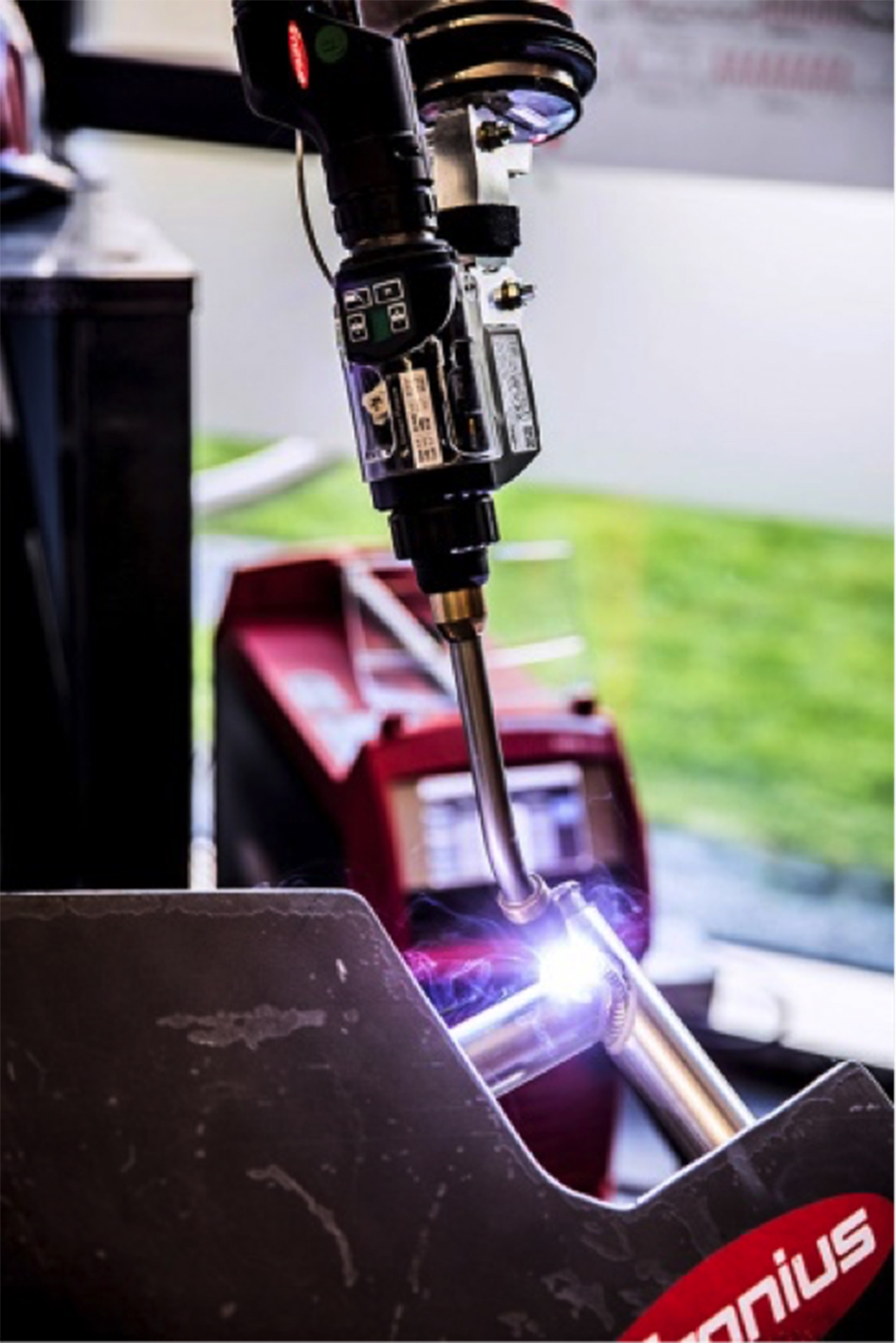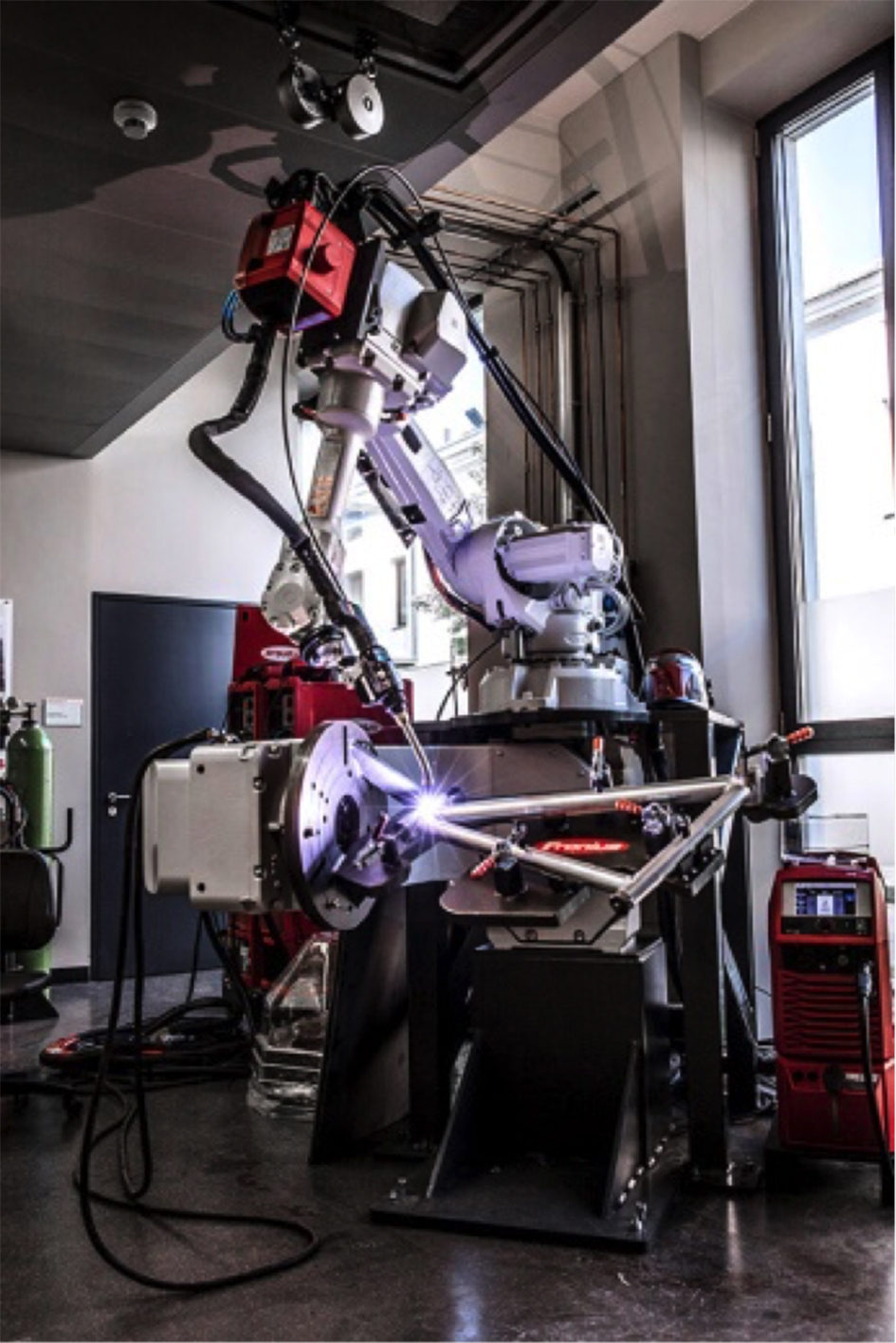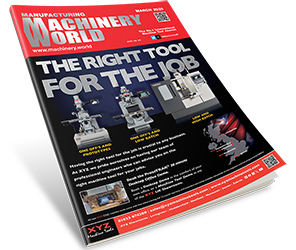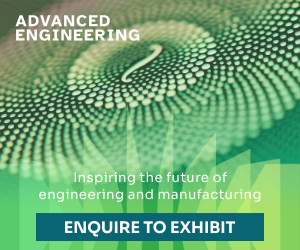New combinations of processes allow for the precise control of heat input when welding
Having the most exact control over the heat input as possible – especially when welding vertical-up seams or joining different thicknesses of sheet metal, such as with pipe-to-flange joints – is essential. PMC mix drive, the new welding process variant, now allows the most precise heat input setting of any process to date in which high and low energy phases are alternated at a low frequency (e.g. SynchroPulse)
Welding vertical-up seams using a standard MIG/MAG power source requires a lot of skill on the part of the welder. In order to prevent the weld seam from sagging, the welding torch needs to be guided in an open triangle (also referred to as a fir tree) so that the weld pool is cooled down by this weaving motion.
Innovative power source manufacturers have therefore used the increasing performance capabilities of digital power sources to develop functions that no longer require this weaving motion, thus simplifying the welding of vertical-up seams or joining of sheets of different thicknesses. Several years ago Fronius was already using this technology to develop its SynchroPulse function, whose activation involves the welding power jumping back and forth between two operating points of the selected characteristic. Achieved by increasing and decreasing the wire speed, the user can set the scope of this fluctuation between 0 and 2 m/min and the frequency between 0.5 and 5 Hz. While the root pass is reliably formed during the high current phase, the process stabilised in the low current phase and the base material cools down. This discontinuous heat input has recently proven to be particularly cost-effective and capable of achieving the weave pattern typical of TIG welding, but without any of the time-consuming weaving motions. The impact is especially pronounced with the robot-assisted welding of aluminium.
With the launch of the latest MIG/MAG power source, the TPS/i, Fronius has once again expanded significantly on this function and introduced additional parameters. Among the benefits of this has been a dramatic increase in the stroke (the gap between the high and low current phases). Furthermore, the length of the high current phase within a cycle can be set as a percentage using the Parameter Duty Cycle, and is no longer restricted to a ratio of 50:50. This allows the heat input to be regulated more accurately over a larger range and independently of the wire speed. Due to these developments, welding vertical-up seams with the SynchroPulse system has become even easier.
Fronius has now gone a step further and used the extensive resources, such as the large memory, high computing power and the internal high performance communication bus (SpeedNet), to create even more significant innovative approaches to controlling the heat input.
The best of both worlds: PMC mix
Fronius has developed a completely new algorithm for the PMC mix, whereby the welding process does not just simply jump back and forth between two operating points of a characteristic, as with SynchroPulse, but switches between an impulse (PMC) and a dip transfer arc process (LSC)!
LSC (Low Spatter Control) is renowned for its very steady arc and minimal tendency to produce spatter. Within the new PMC mix approach, the LSC ensures that the weld pool is stabilised and supported (i.e. it is the “cold” process phase). PMC (Pulse Multi Control) is the most advanced pulsed arc available from Fronius. It guarantees a high welding speed with optimal droplet detachment during pulse welding and is responsible for the necessary penetration.
This allows PMC mix to encompass an even larger power range than SynchroPulse and enables higher welding speeds than a pulsed arc process in combination with SynchroPulse or a TIG process can achieve. PMC mix is thus the ideal solution for automated welding applications too.
Alongside the familiar arc length and pulse/dynamic correction functions, Fronius has also developed new correction functions for PMC mix that enable precise control over the heat input.
Using “upper power time correction”, the user can set the duration of the hot process phase in a mixed process. Likewise, the duration of the cold process phase in a mixed process can be set using “lower power time correction”. “Lower power correction” allows the energy input of the cold process phase to be varied in a mixed process, such that even a small power correction leads to a noticeable change in the input. This allows for even more precise control of the heat input than has been possible in other methods available to date
PMC mix drive
Fronius has once again expanded its range with the PMC mix drive. This process offers more precise control over the heat input in comparison to SynchroPulse and PMC mix. It is characterised by a low power phase, which is generated with the help of a push-pull welding torch: the welding torch’s drive unit performs a reversing wire electrode movement during the cold process phase. Reversing means that the wire electrode is moved backwards after every short circuit. The powerful process control “recognises” the short circuit point and aids droplet detachment by pulling back the wire. The practically currentless material transfer that follows, as well as the broken arc, deliver a stronger supporting function during the cold process phase. Additionally, the arc length is precisely – and Extremely quickly – corrected via mechanical means in every cycle thanks to the TPS/i’s powerful control loops, meaning that the PMC mix drive is especially reliable and low-spatter. The same correction functions as for the PMC mix are also available.
PMC mix drive or PMC mix – a system comparison
Whether the PMC mix drive or the PMC mix is the better choice depends on the application and the existing or intended device configuration. Thus, PMC mix lends itself to welding applications where steel is to be joined by hand or semi-automatically. In general, push wirefeeder systems and manual welding torches without integrated wirefeeder motors are used here.
However, if aluminium materials are to be welded using the MIG process, PMC mix drive is recommended, as push-only wirefeeder systems are unable to deliver the required level of performance here. Even with a welding system like the TPS/i platform, which boasts an especially precise wirefeed function (e.g. innovative feed rollers and contact tips, optimised plastic hosepack liners, powerful drive motors), the aluminium wire electrodes – which are much softer than their steel alternatives (especially when it comes to pure aluminium or Al-Si alloys) – can become clenched in the hosepacks, making it very difficult for them to be fed properly by push-only systems. As a result, push-only systems tend only to be suitable for manually welding aluminium with hosepacks of just a few metres in length. With mechanised or automated welding, the maximum length is significantly shorter.

PMC mix drive harnesses the possibilities offered by a powerful PullMig welding torch, such as the Robacta Drive, to control the heat input even more precisely when welding aluminium, CrNi or vertical-up seams in steel
In the interest of problem-free operation, however, the use of pull or combination (push-pull) wirefeeder systems is recommended with these hosepack lengths. When there is a larger distance between the welding torch and the wirespool or drum, they are a must. For mechanised or automated welding of softer (aluminium) or thinner (CrNi) wire electrodes in particular, it is recommended to use the PMC mix drive in combination with a pull welding torch such as the Robacta Drive.
This allows aluminium to be welded considerably more quickly and, above all, more economically in comparison to TIG welding. It also has a positive effect on the cost balance: the welding torch with direct drive that was specially designed for robot applications is generally able to feed the wire directly from the drum without the need for additional drive units.
In general, wire can be fed for distances of up to 6 metres without the need for special measures. If all the components of the wirefeeder system are used optimally and tailored to each other, e.g. with the aid of PowerLiner equipment, this distance can even be increased to 8 metres.
PMC mix drive application example: aluminium bicycle frame
How much users of the PMC mix drive can benefit is shown using the example of a bicycle frame which is made from aluminium tubes with diameters of 40 to 50 mm and wall thicknesses of 2 to 3 mm. These components are to be joined through automated welding. The Fronius technicians have therefore fitted a welding with a TPS/i 500 and a Robacta Drive PullMig robot welding torch. Welding is performed using the filler metal AlSi (1.2 mm) under 100% Argon (12 l/min) and the pre-set standard settings of the PMC mix drive.
The results convince even the most critical of observers. The weld seam is spatter-free and displays the typical weave pattern of a TIG welded joint. However, the robot, at 30 cm of weld seam per minute, is almost twice as productive as a skilled manual TIG welder. As well as the higher welding speed, the ease of handling of the entire TPS/i system, the long service lives of the wearing parts, the robustness of the process and the high reproducibility of the weld also contribute to the excellent cost-effectiveness of the new process variants.
Conclusion
Vertical-up welds, joining sheets of different thicknesses, lap joints and TIG-esque weld rippling can be realised more quickly and cost effectively than ever before thanks to the PMC mix and PMC mix drive.







